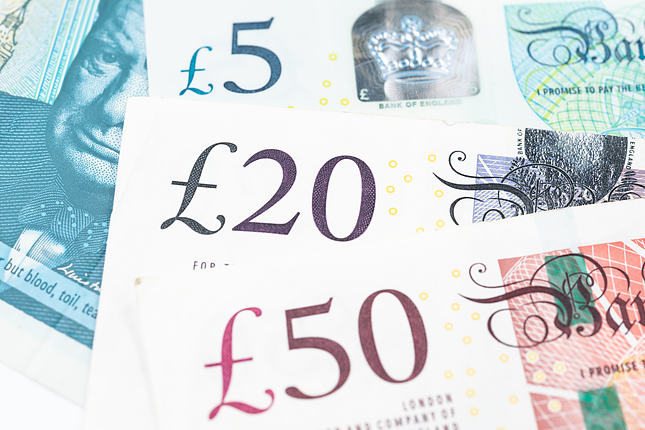- GBP/USD trades on a weaker note around 1.2460 in Thursday’s early Asian session.
- The US Durable Goods Orders rose 2.6% in March, compared to the 0.7% increase (revised from 1.4%) in February.
- The BoE is expected to wait until next quarter to lower borrowing costs, according to analysts from a Reuters poll.
- The US advanced Q1 GDP growth numbers will be in the spotlight on Thursday.
The GBP/USD pair snaps the two-day winning streak near 1.2460 amid the modest rebound of the US Dollar (USD) on Thursday during the early Asian session. The release of the US Gross Domestic Product (GDP) for the first quarter (Q1) will take center stage on the day. Also, the usual weekly Initial Jobless Claims and Pending Home Sales will be due.
On Wednesday, US Durable Goods Orders improved by 2.6%, or $7.3 billion, to $283.4 billion in March, compared to the 0.7% increase (revised from 1.4%) in February. The increase in overall orders was the biggest since November 2023, according to the US Census Bureau. Meanwhile, Durable Goods Orders ex-transportation increased by 0.2%, while new orders excluding defense rose 2.3% in March. Both figures came in weaker than expected. Nonetheless, these reports did not have a significant impact on the US Dollar Index (DXY).
Several US Federal Reserve (Fed) officials and Fed Chair Jerome Powell emphasized that rate cuts aren’t coming in the coming months as inflation remains stickier than expected. The hawkish comments and the higher-for-longer stance from US Federal Reserve (Fed) officials have boosted the Greenback and created a headwind for the GBP/USD pair.
On the other hand, the markets anticipate that the Bank of England (BoE) will wait until next quarter to lower borrowing costs, according to median forecasts in a Reuters poll. The BoE Governor Andrew Bailey and other BoE officials stated that inflation in the United Kingdom declined in line with the central bank's expectations and the risk of elevated inflation had reduced, paving the way for a rate cut. The speculation is that the UK Central Bank will begin its easing cycle before the US Fed drags the Pound Sterling (GBP) lower and caps the downside of the major pair.
Information on these pages contains forward-looking statements that involve risks and uncertainties. Markets and instruments profiled on this page are for informational purposes only and should not in any way come across as a recommendation to buy or sell in these assets. You should do your own thorough research before making any investment decisions. FXStreet does not in any way guarantee that this information is free from mistakes, errors, or material misstatements. It also does not guarantee that this information is of a timely nature. Investing in Open Markets involves a great deal of risk, including the loss of all or a portion of your investment, as well as emotional distress. All risks, losses and costs associated with investing, including total loss of principal, are your responsibility. The views and opinions expressed in this article are those of the authors and do not necessarily reflect the official policy or position of FXStreet nor its advertisers. The author will not be held responsible for information that is found at the end of links posted on this page.
If not otherwise explicitly mentioned in the body of the article, at the time of writing, the author has no position in any stock mentioned in this article and no business relationship with any company mentioned. The author has not received compensation for writing this article, other than from FXStreet.
FXStreet and the author do not provide personalized recommendations. The author makes no representations as to the accuracy, completeness, or suitability of this information. FXStreet and the author will not be liable for any errors, omissions or any losses, injuries or damages arising from this information and its display or use. Errors and omissions excepted.
The author and FXStreet are not registered investment advisors and nothing in this article is intended to be investment advice.
Recommended content
Editors’ Picks

EUR/USD holds around 1.0300, with USD still dominating the scene
EUR/USD trades within familiar levels at around the 1.0300 mark, although the US Dollar pushes marginally higher in a quiet, holiday-inspired American session. Focus shifts to US Nonfarm Payrolls on Friday.

GBP/USD rebounds from multi-month lows, trades around 1.2300
GBP/USD trimmed part of its early losses and trades around 1.2300 after setting a 14-month-low below 1.2250. The pair recovers as the UK gilt yields correct lower after surging to multi-year highs on a two-day gilt selloff. Markets keep an eye on comments from central bank officials.

Gold hovers around $2.670, aims higher
Gold extended its weekly recovery and traded at its highest level since mid-December, above $2,670. The bright metal retreated modestly in a quiet American session, with US markets closed amid a National Day of Mourning.

Bitcoin falls below $94,000 as over $568 million outflows from ETFs
Bitcoin continues to edge down, trading below the $94,000 level on Thursday after falling more than 5% this week. Bitcoin US spot Exchange Traded Funds recorded an outflow of over $568 million on Wednesday, showing signs of decreasing demand.

How to trade NFP, one of the most volatile events Premium
NFP is the acronym for Nonfarm Payrolls, arguably the most important economic data release in the world. The indicator, which provides a comprehensive snapshot of the health of the US labor market, is typically published on the first Friday of each month.

Best Forex Brokers with Low Spreads
VERIFIED Low spreads are crucial for reducing trading costs. Explore top Forex brokers offering competitive spreads and high leverage. Compare options for EUR/USD, GBP/USD, USD/JPY, and Gold.